Walking through the garden, it’s clear that April is when Spring really arrives here. I can’t allow California Native Plant Week to slip by without a brief look at the native plants in our gardens this week.
There are of course the usual suspects, like the quintessential California Poppies (Eschscholzia californica), which are popping up all over the gardens.
We have quite a few more of them this year inside the fenced areas. We had some planted outside the fence, but over a few years the deer and gophers have eliminated them.
Early in the season they appeared somewhat stunted due to the lack of rain, but March and April brought enough precipitation to finally encourage them to grow and bloom.
The locally native Ceanothus thyrsiflorus are in peak bloom this week, and the break in the wet weather couldn’t have been timed more perfectly, and the bees are relishing the flowers.
Also in peak bloom this week are our favorite Iris fernaldii.
Inside the deer fence, where they’re protected, these Iris are really starting to fill in. This year we seem to have an impressive number of flowers, including a new cluster blooming in front of the bee hives.
Blooming just a little later this year, the wild Checker Lily (Fritillaria affinis var. affinis) returned in the same area near the road this year. Last year was the first time we’d found these growing on the property.
We’re seeing just a few more flowers than last season, but there are lots of immature plants in this area so we hope we’ll see more next spring.
The Two-eyed violets, Viola ocellata, are still going strong, and have been since early March.
This year seems to be a spectacular year for our Coast Fairy Bells (Prosartes hookeri).
The plants vaguely resemble our native Western Solomon Seal (Maianthemum racemosum ssp. amplexicaule), but are much smaller in stature, and the tiny delicate blossoms, which are easy to miss, are tucked beneath their broad leaves. This year we’re seeing many more plants, and the flowers seem much more abundant this spring.
In the orchard and gardens, Nemophila menziesii is blooming, but only in a few small areas as much of it was removed. It’s a preferred food source for the Meadow Voles, so we’re trying to discourage them by thinning the groundcover plants in the orchard.
I obviously missed a few when I pulled the plants up this winter, and now they’re blooming I can’t bear to remove them. Besides, I don’t think this spider would appreciate me taking out these flowers.
Near the apiary, the native wood roses (Rosa gymnocarpa) are just beginning to bloom.
We’ve also noticed lots of little Chia Sage (Salvia columbariae) seedlings that volunteered from a plant that self-sowed last year.
A number of other sages are close to blooming, but the most floriferous sage at the moment seems to be the Salvia mellifera hybrid ‘Shirley’s Creeper’.
Despite losing one Encelia californica to gophers over winter, a replacement waiting in the greenhouse has pushed forth its first sunny bloom.
I’m happy to say we’re seeing a lot more native blackberry (Rubus ursinus) this year.
We’re slowly, with the help of the goats, selecting against the highly invasive Himalayan blackberries (Rubus armeniacus) that grow here, in favor of our native species.
Some of the wildflowers are already fading, and setting seed, like this native Forget-Me-Not (Cynoglossum grande). I’m hoping to be able to harvest some of this seed for propagation this year.
The Trillium ovatum are also done blooming for the season, but many are setting beautiful seed heads, bringing the hope of more Trillium in the coming years.
Companions to the Trilliums, our native fern species are pushing lots of new growth, including the Western Sword Ferns (Polystichum munitum)
Coastal Wood Fern (Dryopteris arguta)
and the Giant Chain Ferns (Woodwardia fimbriata) near the creeks.
The red-tinged Big Leaf Maple (Acer macrophyllum) foliage continues to emerge, and we seem to have many volunteer seedlings showing up this spring.
It really does seem as if Spring has suddenly burst forth here, although there are still many more plants waiting in the wings to bloom, including the native Monkeyflower, a number of native sages, buckwheats, and these wild native Star Flowers (Trientalis latifolia).
With plenty to look forward to, we’ll have to check in on the native garden again next month, and see what else is blooming.

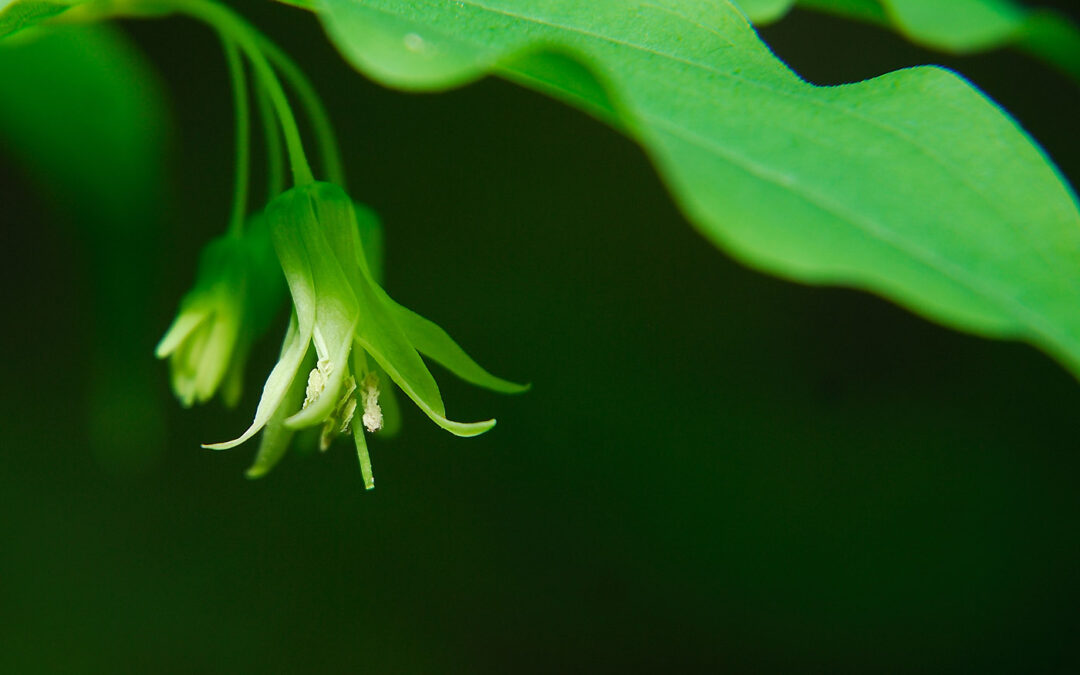

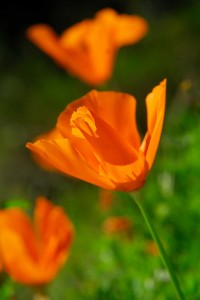
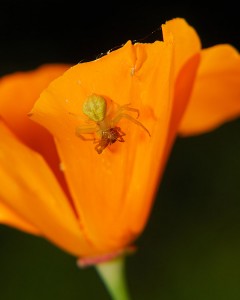
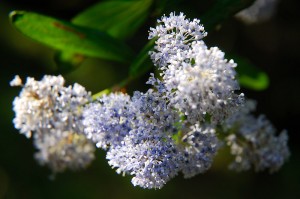


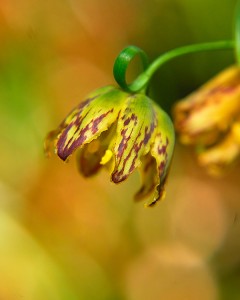
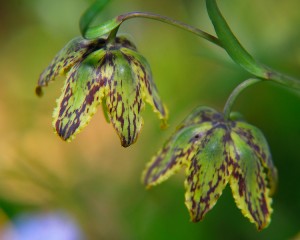
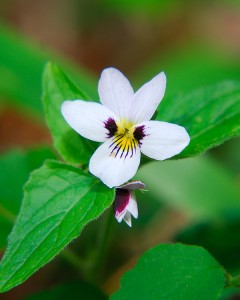

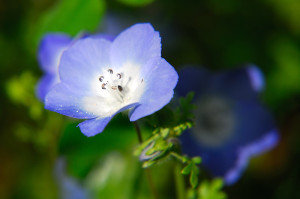
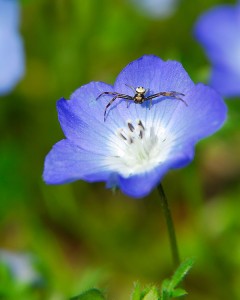
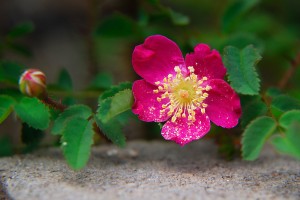
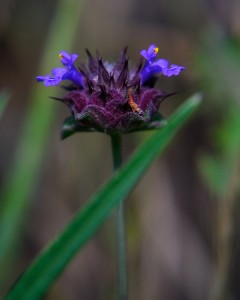
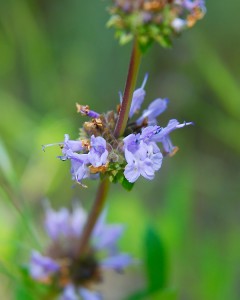
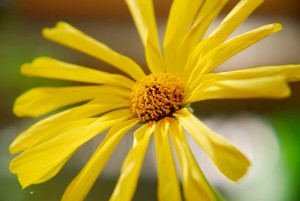
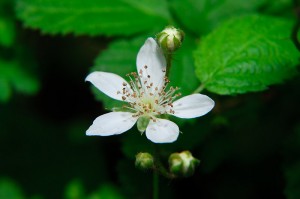
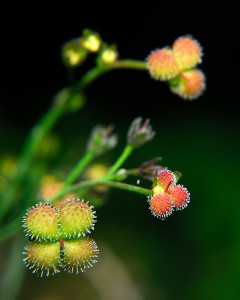

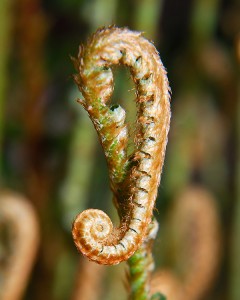
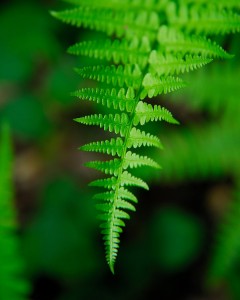

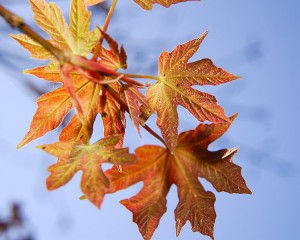
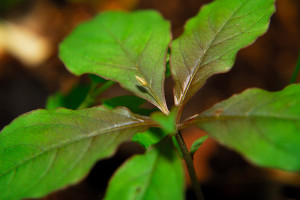







Was out walking along the trails behind our house the other day and saw a few Monkeyflowers blooming. We’re a little warmer on our side of town, so I suspect it will be any day for you guys. So cool that I now know what these beautiful flowers are — thanks to you!
I’ve seen two flowers on the Monkeyflower so far, so they’re just barely getting started, but I expect in a couple of weeks they’ll be a mass of blooms…if they don’t wither in this afternoon’s heat!
So impressed with how many natives you have blooming now! I love that checker lily and Encelia. Of course I am always partial to ferns. Great shot of the frond!
I love the checker lily too. I’m quite fiercely protective of it, in the hopes that more will bloom down the road. I haven’t (yet) found it anywhere else on the property, they’re certainly not abundant here…yet 😉
Very nice native flowers! I would love to borrow your goats for a day or two to get rid of of some of our invasive blackberries. I dig them up every year, and just when I think I’ve gotten them all, more show up. Love the rose, of course, and the little spider on the blue bloom looks like he doesn’t want to give up his precious home! Your poppies are very pretty. Didn’t realize deer ate these, too. It seems there’s hardly any pretty plant they don’t like!
When we take the goats for walks around the property, they jam on the brakes when they spy either wild strawberries, or blackberries. I think they both need bumper stickers that read “will brake for berries” 😛 I’m really impressed at how easy blackberry abatement is becoming with those two to help! Fortunately, they haven’t yet found the wild roses…
They are such small flowers to find, but so intricately designed that they are nature’s little miracles. I saw that because each have special habitats and conditions to survive. Native plants are under such pressure I believe the way the climate has been changing. We have many wild roses at the Falls and so many get removed for reasons I cannot understand.
I love the wild rose here. It’s not everywhere, but it can be predictably found in areas that suit its needs. Usually morning sun, with some afternoon shade, and often near a path or road cut. They are truly tough, and receive no supplemental water, except one plant growing near some rhubarb in the garden. They do look better with a little water, but they certainly don’t seem to need it to survive here. Definitely my kind of rose! NO maintenance 😛
How lovely all these native wildflowers are! I’ve always loved California poppies. That Nemophila and the two-eyed violets are stunners as well! Here in NY I try to get out of the city and into the woods to spot some trout lilies this time of year – one of my favorites.
Oh, trout lilies…I’m jealous!
Wow, gorgeous. I can tell that you live a. It farther inland and higher up than we are. You can grow Big-leaf Maples. beautiful tree. Love the pic of the (crab?) spider on the blue Nemo….
We’re about 8 miles in from the coast, and the property runs from about 450-750 in elevation. The big leaf maples do grow, but some are clearly not thrilled with where they’re growing. As the woodland was left to its own devices for many years, and very overgrown, I think some of the maples have struggled. We have one near the goat barn that my need to be removed soon, as it seems to have a die-back problem, and a blackish fungus at its base. The leaves look like fireblight in late summer, all brown and dead 🙁 Perhaps too much moisture where they’re growing.
That all looks wonderful, and I love your photos. The checker lily is amazing (it’s hard to photograph, I tried last weekend with mixed success.
Happy spring!
That checker lily was very difficult to photograph. These are growing in some fairly dense shade, so lighting is a big challenge. I’m excited for the rest spring, there’s still so much left to bloom!
Beautiful! Spring is my favorite season as everything look so pretty.
I love spring too, especially as native gardens look their best now through about the end of June!
I love to see all your native plants. That fritillaria is gorgeous.
Last year the deer ate the flowers off the Fritillaria at the end of the bloom period. I never saw if they were trying to set any seed or not. I’m plotting to protect them this year to give them a chance to multiply, I’d love to see a lot more here.
California is truly an American gardener’s paradise, especially to us native plant lovers.
We do have a wonderful selection of native plants here, although it seems our weather the last few seasons has been quite erratic, the garden mostly just seems to take it in stride.
So many of the flowers that I love! I have the checker lily in a garden bed. It has tiny offspring around it but they grow very slowly. I am fond of what you call Coast Fairybells, which I only know as Hooker’s Fairybells. (There is also Smith’s Fairybells which are wonderful.) My western trillium seem to add a stem/bloom every year as the bulbs expand, so pretty.
I think they’re also known as ‘drops of gold’, although I don’t know why, as the blooms seem more greenish-cream in color. They didn’t look like much the first time I saw them, but they seem to have liked our mild, and somewhat drier winter this year. I’ve been leaving most of them undisturbed, and they’re filling in very well around the edge of the orchard, as is the Star Flower.
I love the way the fern unfurls – it’s just so cool. It is amazing how delicate natives typically look, and yet they are most always the most hardy (unless the local plant eaters get to them). Love the post!
With so much space to garden in here, I like the hardiness factor. There’s just not time to baby every plant, so the native plants definitely suit my gardening style here. Providing they have their cultural needs met, nature takes care of much of the rest (except the weeding of course 😛 ).
a wild abundance of natives here Clare with such an understated charm that I wonder why we took them to the next level of cultivated forms. Enjoyed following the links and reading your in depth studies. How I love your Salvias
I understand why gardeners like the cultivated varieties, whether it’s for their more abundant flowers, or resistance to disease, but I do rather like the simple beauty of some of the more delicate endemic natives. That said though, I found myself coming home with five different improved cultivars of Ceanothus yesterday. We have a native variety here, but the hybrids are certainly more impressive in bloom color, if not in volume. We have room for both here though 😉
Oh what beautiful natives Clare – I just wish the UK was just as interested in native plantings as our gardens would be so much richer. Your Nemophila menziesii is sold here as a summer annual seed though its been years since I last sowed it.
BTW as I was scrolling down the page the Western Sword fern just looked like a sea horse.
I can see the sea horse resemblance, although I hadn’t noticed it until you mentioned it. It is an interesting species to watch unfurl.
What delightful Native flowers you have!! The California Poppies are top of my list!!
This time of year, the poppies definitely command attention with their vivid orange hue. Sometimes it makes it difficult to see the other less garish native flowers, at least from a distance!
Thank you for sharing the beautiful California natives. We forgot sometimes how many plants we have to enjoy without a trip to the nursery.
When I look at neighboring properties, that removed much of the native vegetation years ago, it really makes me appreciate what grows here of its own accord. We supplement those plantings of course, but we many locally endemic species here that are definitely worthy of propagating…just as soon as I can free up some ‘spare time’ 😀
I really enjoyed the tour of your April wildflowers. I am tempted to move to California, just to experience those wild California poppies! You have a wonderful diversity of native plants. I am glad your goats are doing their part in preserving the ecology!
I’m so happy the goats love blackberries. Those Himalayan blackberries have wickedly large thorns, but the girls are more than happy to step up and mow them down! Of course, they like to chomp on the native ones too, so we have to steer them in the right direction!
I just love how different your natives are from mine…that checker lily is stunning and my fav is always the poppies…
What a great collection of spring wildflowers you have! I’m home in Maine this weekend, where the Cinnamon Ferns are putting up their fiddleheads and native wild blueberries and strawberries are in bloom. (Blackberries bloom much later here; they’re a fall berry.)
I love your native plants. So gorgeous. I have plans to put in a native bed this year. Hopefully the weather holds for me to have the time. Thanks for the inspiration.